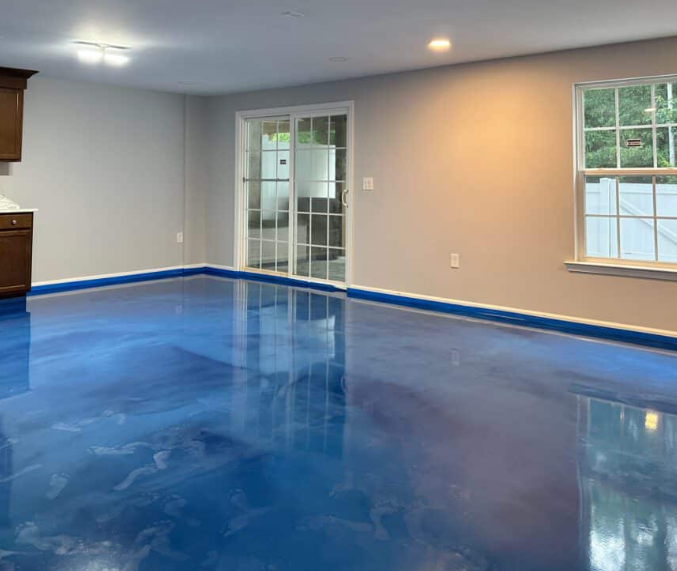Cracks in concrete floors can compromise structural integrity, reduce the surface’s lifespan, and even create safety hazards (they are more than just an ugly sight). Thus marking the importance of high-traffic commercial spaces, industrial facilities, or residential garages to effectively repair cracks as soon as they appear to affect durability and aesthetics. Epoxy crack fillers are an excellent solution that has completely changed how we approach
concrete repairs.
These specialized fillers penetrate into the cracks and bond with the concrete, and create a smooth, durable finish, restoring the floor’s structural integrity.
Epoxy crack fillers are incredibly strong and offer moisture resistance, flexibility, and quick application, making them a preferred choice for concrete repair professionals and DIY enthusiasts.
Interested in knowing more about these fillers? From how they work to the types of cracks they can address and exploring the best materials for filling concrete cracks, we will help you understand everything in this blog.
Common Crack Issues on Which Epoxy Fillers Work
Shrinkage Cracks
Shrinkage cracks are common in newly poured concrete, occurring as the material dries and shrinks. These cracks typically appear during the curing process and are often narrow, but they can widen over time if they are not addressed properly.
Settlement Cracks
Settlement cracks are caused by shifts or settling of the ground beneath the concrete, often seen in newly constructed floors or those exposed to uneven soil conditions. These cracks can vary in size and depth, depending on the extent of the settlement.
Impact Cracks
These cracks occur due to heavy objects like machinery or other forceful impacts on the concrete surface. These cracks often appear as localized damage, ranging from small chips to larger fractures, which can compromise the floor’s strength.
Thermal Cracks
When concrete expands and contracts due to temperature fluctuations, thermal cracks occur. These cracks are especially common in outdoor concrete surfaces exposed to extreme weather conditions, such as patios, driveways, or industrial floors.
Hairline Cracks
Hairline cracks are fine, superficial fractures that develop over time due to natural wear and tear, moisture exposure, or minor shifts in the concrete. While they might seem insignificant, hairline cracks can lead to more serious issues if left unaddressed, as moisture can seep in and cause further deterioration.
Structural Cracks
These are deep, serious fractures that can compromise the overall strength of the concrete. These cracks often arise from significant stress or pressure, such as foundation shifts, excessive loads, or poor initial construction.
Joint Cracks
Joint cracks occur along expansion or control joints, which are intentionally created to allow for the natural movement of concrete. However, over time, these joints may crack due to excessive movement, wear, or poor joint maintenance.
Best Epoxy Materials to Filling Concrete Cracks
Epoxy Injection Resins
Epoxy injection resins are an advanced and effective method for repairing cracks in concrete and masonry. This two-part system injects low- or high-viscosity epoxy into cracks, creating a permanent bond. It is known for its superior adhesive tensile strength that restores structural integrity even in small or intricate cracks.
One of the most significant benefits of epoxy resins is their moisture resistance, which ensures durability even in damp environments. They have a quick cure time that minimizes downtime, making injection resins suitable for time-sensitive projects. And this minimally invasive process requires only small drill holes which reduces disruption to surrounding structures.
Epoxy Mortars
Epoxy mortars are a versatile and reliable solution for repairing substantial cracks and levelling concrete floors. This polymer-based bonding material is a blend of epoxy resins, sand, and aggregate, creating a strong, impermeable barrier that protects reinforcing steel from corrosion. During curing, its exothermic reaction causes slight expansion and subsequent contraction, ensuring minimal shrinkage and restoring structural integrity.
It is ideal for filling voids between 3–and 38 mm. Epoxy mortar offers exceptional adhesion to various surfaces, including concrete, steel, and brick. It is super resistant to chemicals, moisture, and impact, making it a preferred choice for industrial and commercial environments.
Epoxy Sealers
These are composed of two components—a resin and a hardener. Epoxy sealers form a strong, abrasion-resistant, and long-lasting finish when mixed. These sealers effectively seal hairline cracks, prevent further deterioration, and provide waterproofing. It is great for indoor applications and is used for heavy-duty industrial floors, food preparation areas, concrete countertops, and high-traffic spaces.
These concrete crack filler epoxy
bond seamlessly with concrete and accommodate material expansion or contraction. This ensures the coated surface can withstand mechanical stress, making them perfect for warehouses, breweries, and damp environments like bathrooms and swimming pools.
When selecting epoxy sealers, consider key factors such as flexibility, waterproofing capabilities, and compatibility with your surface. While clear and coloured options are available, epoxy sealers are generally limited to indoor use due to their susceptibility to UV-induced yellowing.
Conclusion
Repairing cracks promptly using high-quality epoxy materials can prevent further damage, extend the lifespan of the surface, and ensure safety in high-traffic areas. These crack filler epoxy
are engineered to simplify and improve the repair process, providing reliable, efficient, and long-term solutions for both professionals and DIY enthusiasts. If you’re looking for a trusted
epoxy company near you, consider Chromology. We specialize in offering top-quality epoxy solutions tailored to your concrete repair needs, ensuring durability and excellent results.

